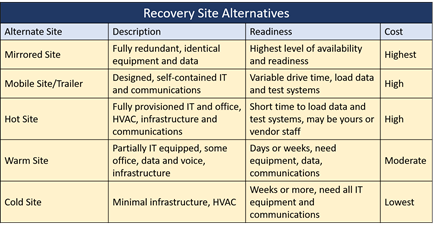September 2017 – There’s a lot of talk in the media about the positives and negatives of working from home. Whatever your thoughts are on this topic, more and more companies are implementing telecommuting programs as a business resiliency strategy. During a disruption such as a power outage or flood, telecommuting can help companies avoid a total shutdown by relying on remote employees to perform critical business functions. The question is, are companies correctly thinking through all the implications of remote working and crisis management?
When an unforeseen incident occurs, it is essential that your critical employees get back to work as quickly as possible. The safety of employees, communications, productivity and engagement are paramount in a company’s ability to remain operational during and after an incident. A remote worker strategy is an approach to maintain operations when an organization’s facilities are unavailable for use. This article looks at the ways remote working is impacting business resilience and provides some solutions for preparing your company and managing teleworkers during a crisis.
1. Business resilience is becoming a strategic driver for remote working
Sometimes it takes a disaster for senior executives to realize that remote working works and employees can be productive and engaged when working from home. “In 2013, Canada experienced a flood which became their costliest disaster in history. The City of Calgary realized the need for business continuity and resilience after the flood. They wanted to position the organization to recover from business interruptions faster and improve business continuity. As a result of foundational projects, such as the building of a corporate Flexwork Hub, the organization recognizes that flexible work supports business continuity and resilience. This is especially true for the City of Calgary’s largest call centre. The Work-From-Home pilot has eliminated the need for an increase in the real estate portfolio and supported a productive and engaged workforce that can respond to citizens’ needs and keep businesses running. The organization is now receiving increased support to become a leader in resiliency planning, as Calgary was recently named one of the Rockefeller Foundation’s 100 Resilient Cities, Figure 1: Calgary is Resilient .”[1]

Solution: Align your workplace strategy with your business resiliency strategy. Craft a Business Resilience Alliance with Facilities, Real Estate, Information Technology, Business Continuity and Crisis Communications teams, Human Resources, Risk Management and others. Help them understand the positive impacts remote working can have in a crisis and how these programs must be strategically affiliated and coordinated for a smooth recovery.
2. Remote working reduces costs for alternate workplace recovery facilities
The costs are increasing for recovery facilities (e.g., hot/warm/cold sites) to restore phone and computer systems and provide staff seating for business resumption. For many companies, having access to these recovery facilities is crucial. A severe natural disaster could result in a widespread power or communications outage and many businesses rely on companies like Sungard to provide facilities to restore technology and offer workstations.
As seen in Figure 2: Recovery Site Alternatives, there are many options to choose from depending on your type of business and how quickly you need to be back in business. Having a business resilience strategy that combines both telecommuting and worksite recovery alternatives (Figure 1) presents the most comprehensive option and save costs by reducing the number of rented seats needed. Recovery sites usually charge an annual fee with required multiple year contracts. Payment is obligatory whether you have a disaster or not. Reducing the number of required seats, will reduce this fee. Upon declaring a disaster, companies pay a declaration fee along with rental fees for the total contracted workstations no matter how many are used. Consequently, miscalculated seating requirements result in higher rental fees.

Solution: Conduct a business impact analysis to understand options and determine if alternate recovery site costs offset potential losses from a disaster. Understand who will be working from home and how activation will take place. To do this, the right elements need to be in place: What is the best recovery site option (Figure 2) for your business?; What are your critical business functions?; Who are the critical staff? Who needs to work and where on day 1, day 3, week 1, etc.?; Who can work in shifts?
3. Remote working enhances productivity during a disaster
“The Blizzard of 2016 rattled the mid-Atlantic states producing widespread snowfall totals of 1 to 3 feet. Washington, D.C., Baltimore and New York City received more than 2 feet of snow during the event and all four major cities shattered daily records for the most snow on Jan. 23.” [2] Even though the snow eventually melted, those companies with remote working programs were not only more productive, they also kept their employees off dangerous roads and/or stranded at work.
According to Kate Lister, President, Global Workplace Analytics, Figure 3, “A company with 1,000 employees earning the average United States salary (about $50,000) would lose $250,000 a day if its people couldn’t get to work and were not trained to work at home. For just this reason, telework is the cornerstone of the federal government’s continuity program. Since the year 2000, a mandate requiring every federal employee to work at home to the maximum extent possible has been in place. At one point, they estimated the entire cost its telework program rollout could be offset by the productivity gained in one snow day. Years later, during the severe snowstorm of 2010, those numbers were tested. The U.S. Office of Personnel Management originally estimated the shutdown was costing $100 million per day in lost productivity. They later revised the number to $71 million a day to reflect the fact that their teleworkers were still able to work.

Granted, telecommuting can be critical to productivity. However, it is not the solution for all business resumption challenges. While a local crisis may involve a few city blocks or a handful of companies, a regional event, like Hurricane Harvey in Houston, impacts a much larger geography. If your data center is up and running on a hot site, teleworking might be a reasonable option in a single site event. However, for a local or regional disaster, telecommuting may be an issue because there are no government regulations around when internet providers need to provide service after the power goes out. Plus, a severe disaster could damage many employees’ homes or result in widespread power or communications outages as seen in Figure 4: Employees Flock to Starbucks after Superstorm Sandy, where employees crammed into to the nearest Starbucks for internet connectivity.

The International Facility Management Association (IFMA) stayed in business during Hurricane Harvey because of their robust remote worker program. Even though they couldn’t access their office building due to flooding, IFMA staff were able to continue operations by accessing company data in the cloud and transferring phone service to home offices.
Obviously, employees need the tools and access to company data systems to work remotely during a disaster. Regrettably, while a lot of organizations include teleworking in their business continuity plans, they neglect to provide the necessary equipment (e.g., laptop, phone), passwords, VPN access/authorization information, or permission to use personal devices. Even worse, laptops left overnight in the office will do no good if the crisis happens after work hours. Nevertheless, those organizations like IFMA that have a strong remote working program and test it regularly are way ahead of the game.
Solution: Understand who your critical employees are and ensure they have the tools (e.g., laptop, access to applications) and VPN access into your systems. Create policies and plans for provisioning and access. Test, test, test your plan! Consider having Memorandums of Understanding (MOUs) with hotels, co-working facilities, business allies and companies like Liquidspace and Sharedesk for alternative sites and internet connectivity.
4. Remote workers are better prepared to communicate and collaborate during a crisis
Remote workers and their managers already have the tools, technology and training needed to communicate and collaborate in a disaster. According to Lister, “Research shows that teamwork can be equally good in person as it is virtually, provided your people have the tools and technologies to make it work.” Having this experience and the protocols defined for working with co-workers on websites like WebEx, GoToMeeting and Freeconferencecall.com saves time and reduces typical communications mishaps that happen in a crisis. Having everything in place before a crisis hits rather than figuring it out on the spot is much more productive.
Solution: Determine ahead of time what tools will be used to communicate and collaborate during a crisis. Create procedures and include them in your Business Continuity and Crisis Communications Plan. Ensure management and key stakeholders (e.g., Business Resilience Alliance) understand protocols and use of communication tools. Test your plan and train employees and managers on virtual tools and technology. Train managers to manage for results rather than by walking around.
5. Remote working improves health, reduces absenteeism and sick days in a disaster
According to the U.S. Department of Homeland Security (DHS), Figure 5, “in a severe pandemic, absenteeism attributable to illness, may reach 40 percent during the peak weeks of a community outbreak, with lower rates of absenteeism during the weeks before and after the peak. Certain public health measures (closing schools, quarantining household contacts of infected individuals) are likely to increase rates of absenteeism. Epidemics will last 6 to 8 weeks in affected communities. Multiple waves (periods during which community outbreaks occur across the country) of illness are likely to occur with each wave lasting 2 to 3 months. [3] This means the majority of the costs in a pandemic will be human resources related.

DHS recommends telecommuting and social distancing as key disease contaminant strategies to reduce the frequency and type of face-to-face employee encounters. In the case of a severe outbreak of an illness, telecommuting can isolate healthy from potentially contagious employees to reduce concern and maintain productivity. Regardless of a pandemic, enabling home working is not only a sensible solution it is also a better approach to reducing absenteeism and maintaining a healthy and safe work environment.
Solution: Determine your Telecommuting Policy during a crisis. Incorporate telecommuting into your business continuity and pandemic plans. Make sure telecommuting employees have an appropriate work environment to perform their job safely and protect proprietary information. Test your plan.
Conclusion
It takes years to build a business but only minutes to lose it if you are not prepared when a crisis hits. As shown here, remote working reduces risks. But, keep in mind, starting a telecommuting program at the beginning of a disaster adds additional stress to employees and they are highly unlikely to adapt quickly. Providing telecommuting options only in the event of a disaster is a risky policy. Employees need time to adapt to new ways of working. Finally, it is critical to establish a regular business resilience training and testing program. If employees do not work from home regularly, the first few times may be confusing. Companies should train, test and practice with technology. This will ensure that everything runs smoothly in a future disruption.
[1] Coles Levine, Diane and Johnson-Sanquist, Nancy, editors. Work on the Move 2: How Social, Leadership and Technology Innovations are Transforming the Workplace in the Digital Economy. IFMA Foundation, 2016.
[2] Rathbun, Brett. “Record-breaking blizzard buries mid-Atlantic with over 2 feet of snow.” AccuWeather.com. January 28, 2016.
[3] U.S. Department of Homeland Security. “Pandemic Influenza Preparedness, Response, And Recovery Guide for Critical Infrastructure And Key Resources.” September 2006.




